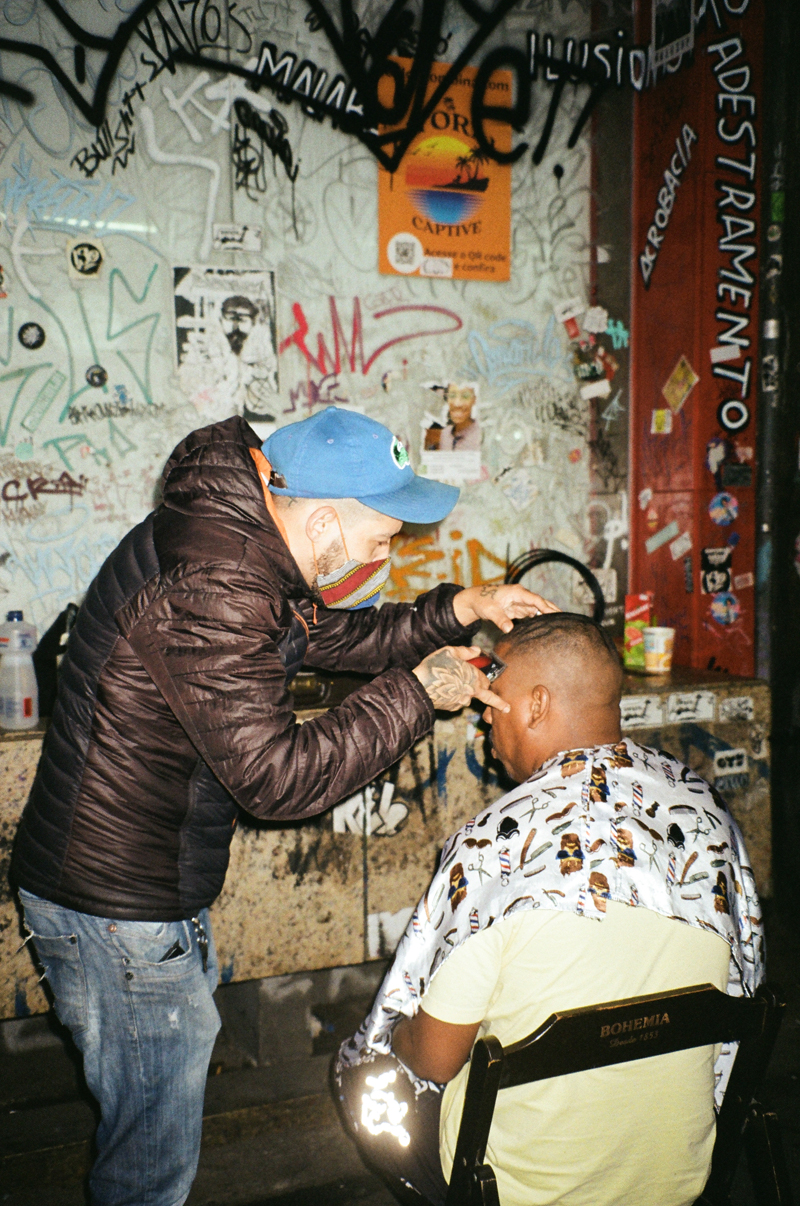Archives of São Paulo
Organized by Bruno Baptistelli, Tiago Malagodi, and Paulo Nimer Pjota.
September 03 – September 25, 2021
Espaço Delirium
Rua General Jardim 556
São Paulo, Brazil
installation view
’Ordem e Progresso’ 2019
’007’2019
installation view
installation view
’Just do It’ 2019
’Victor’2019’
installation view
’São Paulo, Brasil’ 2021
’Sem Título’ 2018
’Sem Título’ 2020
installation view’Murilo 2’ 2021
installation view’Plug’ 2021
All images courtesy and copyright of artist and space. Photos by Ana Pigosso.
It’s with pleasure that we invite all to the first individual exhibition of Gabriel Branco, at ‘Espaço Delirium’ (Artist Run Space), with the organization and text of Paulo Nimer Pjota. Branco is born and raised in the region of São Mateus, West Zone of São Paulo, and uses the language of analogic photography. His work happens as an autobiographic diary considering the cultural surroundings present in the streets, funk parties, in the informal commerce and the architecture of the city of São Paulo.
Archives of São Paulo
PJ
Who are the people you photograph? And how do you choose them?
GB
Family members and “random” people I meet. Mainly they are people who draw my attention for being different from the standards of common society.
PJ
Can you tell, for example who are the people of the untitled photographs? Where did you take those photos?
GB
They are people that where in the “baile” (funk parties that usually happen in the streets of São Paulo neighborhoods), I took these pictures in the “baile” of my neighborhood.
Gabriel Branco [1997], uses analog photography as an autobiographic diary considering the cultural surroundings present in the streets, in the “baile” funk, in the informal commerce, and architecture of the city of São Paulo. The artist captures the marginalized space of which he is a part of without the academic fetishistic filter.
PJ
When was your first contact with an analog camera, and why did you choose analog and not digital?
GB
My first contact was with a neighborhood friend who already took some pictures. I chose analog photography for the process and vintage aesthetics in the final result.
PJ
Who was this friend, from school or from life? Have you Always lived in São Mateus?
GB
My photography friends from the beginning were Moisés Rocha, Pedro Mirandolla e o Gian Franco which taught me a lot. No in my childhood I lived in Santo André and after a few years I moved to São Mateus.
Gabriel transforms looking in language, pointing out habits and traditions that refer to his biography which dissipates and finds itself in the collective, denouncing symbols and icons that are marginal to the institutional knowledge of art. The photography of Branco transcends the technical and formal notions: his work is about culture, a kind of culture that many times doesn’t find its way into the discussions about art.
Fashion, lifestyle, behavior and aesthetics for Branco sound as a vocabular of codes, it is as if a melting pot where everything is mixed to become a dialectic alphabet about the experience of the explorer, of the traveler, that he notes in his vigorous diary with details that could pass unnoticed to those which do not understand those codes.
Branco re-signifies through photography the understanding of language. In “Just do it”, Nike’s brand slogan, the artist reinforces in an ironic way the necessity of “just do it yourself” through the symbol of a street seller; at the same time the tattoo of a clown serves as a symbol of a possible passage through the life of crime. In “Ordem e progresso” (Order and Progress) the emblematic phrase of the national Brazilian flag shifts from its common place where, as in a revolutionary act, the informal street market becomes a rebellion against the state.
Archives of São Paulo shows through imagery a city that is known but invisible to the post-colonial intellect, far away from the triviality of art and closer to the real.
Paulo Nimer Pjota















